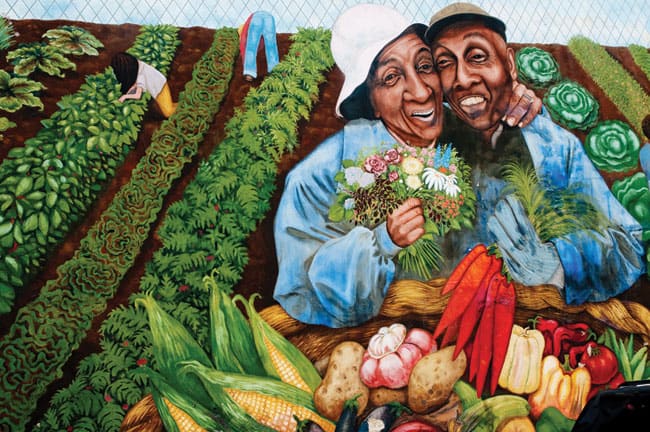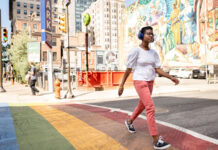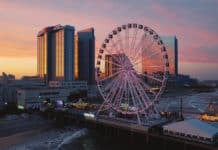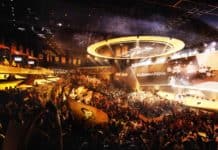
Taking a stroll around Philadelphia, groups will likely be greeted by over 3,000 murals that brighten the city’s diverse neighborhoods. A mix of scenes—from lush and colorful landscapes to communities helping one other out—pull visitors into this vibrant energy. Through the city’s Mural Arts programs, groups can dabble in interactive painting with a trained muralist or do some good with restorative justice CSR, a groundbreaking program that combines art and community service. The arrival of Pope Francis this September for the World Meeting of Families and next year’s Democratic National Convention are creating their own buzz.
“Philadelphia really is a modern renaissance city. There may be a perception of cheesesteaks and the Liberty Bell, but Philadelphia is so much more,” says Julie Coker Graham, executive VP of the Philadelphia Convention & Visitors Bureau.
The Renaissance City
Although cheesesteaks are still a local staple, Philadelphia’s culinary scene is diverse. After arriving at our hotel, the Radisson Blu Warwick Hotel, Philadelphia in the Rittenhouse District, our group walked a few blocks to Tinto, a Spanish tapas restaurant and bar owned by Iron Chef, Jose Garces. The dark wood and soft glow of the lights give warmth to the setting, and the small plates-style is conducive to sharing and easy conversation. Tinto also offers private dining and lounge rooms for customizable wine tastings. Parc restaurant will give groups the feeling they have been teleported from a street in Philadelphia directly into a Parisian bistro.
There are currently 9,240 hotel rooms within a 15 minute walk of the Pennsylvania Convention Center. Expanded in 2011, the LEED certified center has over 2 million sf of meeting space. Natural light and city views permeate the Broad Street atrium and exhibit hall on the second level—the Pennsylvania Academy of Fine Arts’ 51-foot “Paint Torch” sculpture granting a strong sense of space below. The expansion, along with Philly’s citywide revitalization, has helped the center land $870 million
in new business.
Attached to the convention center, Reading Terminal Market is filled with tempting aromas. The busy market is a popular spot to get lunch from vendors and restaurants or buy locally grown produce, artisan cheeses and Amish specialties. A surge of millennials in downtown Philadelphia is driving all sorts of development—from retail to restaurants. “We have the fastest growing population of millennials in the country,” Graham mentions, “which is the reason Forbes chose Philadelphia to launch their first Under 30 Summit, in conjunction with their annual 30 Under 30 convention, in October 2014 at the Convention Center.”
After savoring a sticky bun from Beiler’s Bakery, our group walked two blocks to Dilworth Park, next to City Hall. The park was recently transformed into a modern urban space, featuring a fountain with programmable dancing water jets, a terrace and great lawn. Groups of 100 to 4,500 can use the space for outdoor events or evening galas under the stars. Mayor Michael A. Nutter summarized best our three-day meander through the city: “If you haven’t been here in the last five years, you really haven’t been to Philadelphia.”










